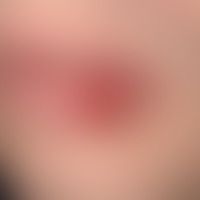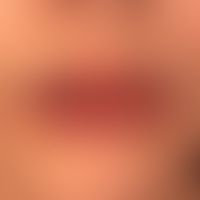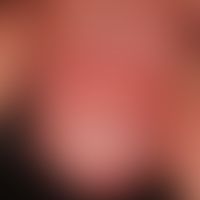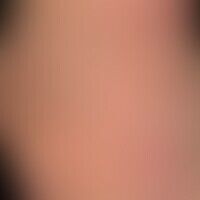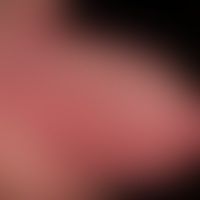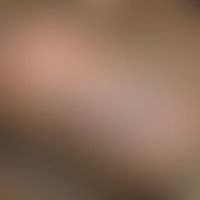Image diagnoses for "Skin defects (superficially, deep)"
175 results with 456 images
Results forSkin defects (superficially, deep)
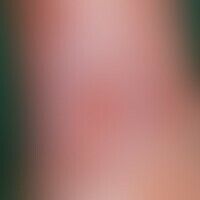
Venous leg ulcer I83.0
Ulcus cruris venosum. deep, punched out ulcer on the lower leg in CVI. the edges are macerated whitish in places. there is a film of zinc paste in the surrounding area.

Pityriasis lichenoides (et varioliformis) acuta L41.0
Pityriasis lichenoides et varioliformis acuta: acutely occurring "colorful" exanthema with papules of different sizes, measuring 0.2-0.8 cm, erosions, and encrusted ulcers; healing with formation of varioliform scars.

Primary cutaneous cd30 positive large cell t cell lymphoma C86.6
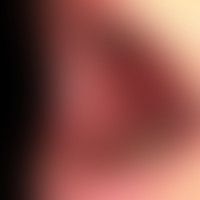
Lichen planus erosivus mucosae L43.8
Lichen planus erosivus mucosae: Extensive, painful erosive mucositis existing for more than one year. Overall progressive course. Painful erythema and erosions as well as extensive whitish plaques are visible.

Livedo racemosa (overview) M30.8
Livedo racemosa: irregular, bizarre, not closed circular segments on the lower leg and ankle region, as pioneering morphological indicators of livedo racemosa; for several months, painful, bizarrely configured ulcer in the middle of the calf.
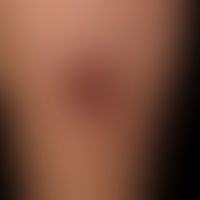
Cholesterol embolism T88.8
Cholesterol embolism: Patient with recurrent, suddenly occurring, very painful, therapy-resistant ulcers; moderately pronounced livedo image.

Thrombangiitis obliterans I73.1
Thrombangiitis obliterans: 48-year-old female patient; decades of nicotine abuse. 12 months of acrozynosis (even more severe in cool surroundings) and mummified fingertip necrosis with osteolysis.
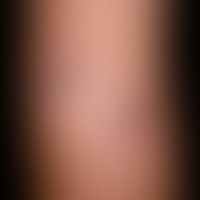
Old world cutaneous leishmaniasis B55.1
Leishmaniasis cutane: after a holiday in Tunisia appeared, little symptomatic, roundish, red-brown ulcerated nodules.
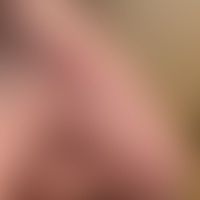
Insular lobe, myocutaneous
Insular lobe, myocutaneous: Healing of the myocutaneous insular lobe after 10 weeks

Shingles B02.7
Zoster generalisatus (with drug-induced immunosuppression): For 5 days increasing redness and swelling of the skin with stabbing, shooting pain. extensive erythema, blisters, scaly crusts and swelling. > 25 blisters beyond the segmental infestation.
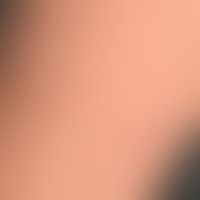
Lymphomatoids papulose C86.6
Lymphomatoid papulosis: Painless, flat papules and nodules with central scaling and crust formation, appearing intermittently for more than 1 year, 0.3 - 1.2 cm in size. 45-year-old otherwise healthy male.

Artifacts L98.1
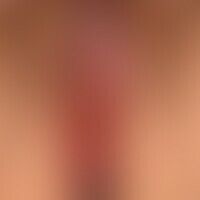
Lichen planus vulvae L43.9
Lichen planus of the vulva: for months itching, burning and pain when urinating. 42-year-old female patient with extensive erosions, rhagades, veil-like white discoloration in the upper third of the large labia.
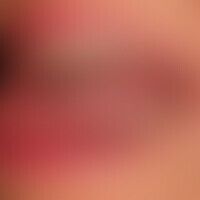
Lichen planus mucosae L43.8
Lichen planus mucosae: severe, erosive painful glossitis with whitish, non-scrapeable coatings on the edges of the tongue.

